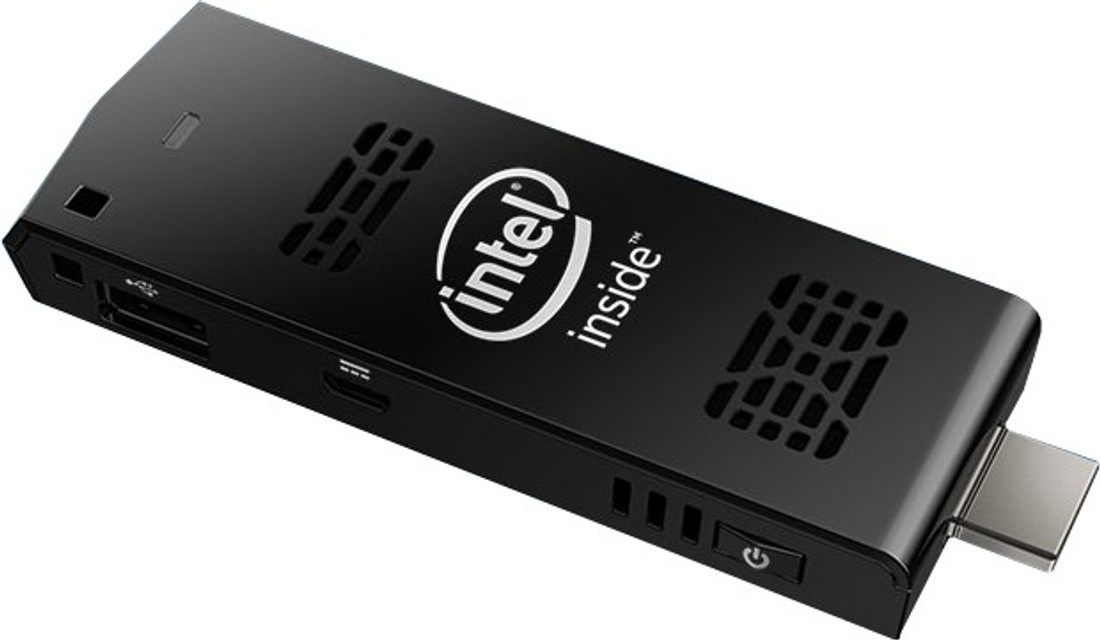Computer in your pocket, that was basically how, term called Mobiles(Cell Phone) came into Picture. That spell wasn't perfected until something truly groundbreaking like IPhone came in 2007 & Completely changed the way we used phones to compute basic tasks instead of hoping onto our PC's. Well even though we're fanboys of our beloved companies, we cannot deny the fact that, Apple completely changed the Smartphone market upside down & made a lot of Money out of it, as they always do. Well with the same approach Mini-desktops were introduced into the market earlier to reduce the pain that many occur with those dangling cables ! Stuff like Mac mini, Mac Proetc. Which means Whole computer made to fit in that tiny body, just hook it onto your TV, wobble in a Bluetooth mouse & a keyboard, You're good to go. But what if Computers would go as tiny asPendrives ? Yes, Intel has something great let's find out.
Intel Compute Stick STCK1A32WFC :
 |
| Essentially it's your CPU morphed into a tiny little Stick Capable of great computing power. It is great for business as you no longer need a Giant Box of CPU, just Bluetooth peripherals that's it. Consider Business presentations, Simply plug-in the Intel Stick to any external Display and there you go, Windows 8.1 boots up. |
Specifications :
- It has a 1.83 GHz Quad Core Intel Atom Processor equipped with 2 GB DDR3 RAM.
- The processor has in-built support for Intel Virtualization Technology (Intel VT-x).
- Has on-board Intel HD Graphics.
- It has a USB 2.0 port, HDMI 1.4a slot & a microSD card slot.
- Bluetooth 4.0 and Wi-Fi 802.11 b/g/n enabled hasslefree connectivity.
- A 32 GB eMMC 2 in-built storage.
- Intel HD Audio via HDMI with multi-channel digital audio support.(No need for any Audio Card)
| via Flipkart |
Connection (How does it work?)
Simply Connect it to any HDMI display, then connect a Micro Usb Adapter(5V, 2A AC-DC, Comes with the Stick) to power it through a wall mount supply, That's it.
It goes like this : Intel
So now you can Transform your HDMI supported TV or Monitor into a full Computer and check emails, play games, make presentations or watch videos on YouTube, search the web or share your photos. Basically do anything until that 2GB Ram can handle it. You'll need a wireless keyboard and mouse though! It costs around Rs. 9,999 ( approx $149.00). Ohh and it's Windows 10 ready !


Comments
Post a Comment